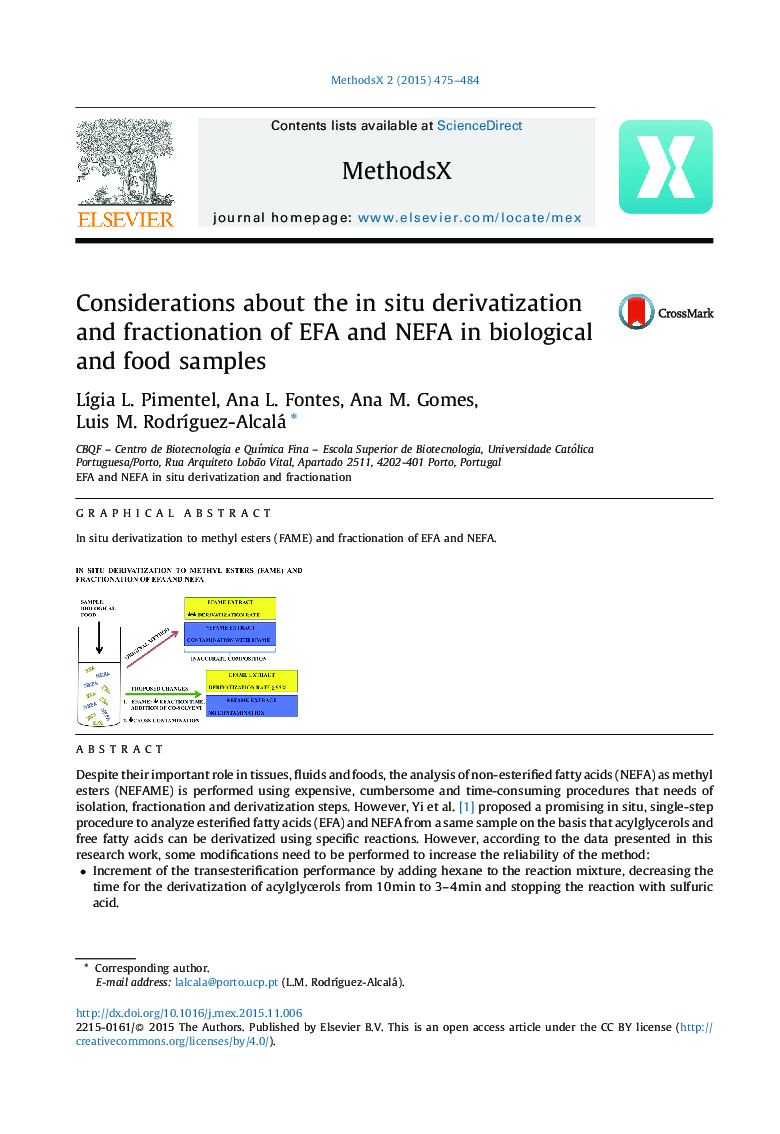| کد مقاله | کد نشریه | سال انتشار | مقاله انگلیسی | نسخه تمام متن |
|---|---|---|---|---|
| 2058736 | 1543968 | 2015 | 10 صفحه PDF | دانلود رایگان |

Despite their important role in tissues, fluids and foods, the analysis of non-esterified fatty acids (NEFA) as methyl esters (NEFAME) is performed using expensive, cumbersome and time-consuming procedures that needs of isolation, fractionation and derivatization steps. However, Yi et al. [1] proposed a promising in situ, single-step procedure to analyze esterified fatty acids (EFA) and NEFA from a same sample on the basis that acylglycerols and free fatty acids can be derivatized using specific reactions. However, according to the data presented in this research work, some modifications need to be performed to increase the reliability of the method:
• Increment of the transesterification performance by adding hexane to the reaction mixture, decreasing the time for the derivatization of acylglycerols from 10 min to 3–4 min and stopping the reaction with sulfuric acid.
• Avoid cross-contamination of the NEFAME extract by adding 500 μL of water after collection of EFA methyl esters (EFAME).
• Samples are spiked with three internal standards: a triacylglycerol (to calculate the concentration of EFA), a free fatty acid (to calculate NEFA) and a FAME (to control isolation of FAME and cross-contamination).
In situ derivatization to methyl esters (FAME) and fractionation of EFA and NEFA.Figure optionsDownload as PowerPoint slide
Journal: MethodsX - Volume 2, 2015, Pages 475–484